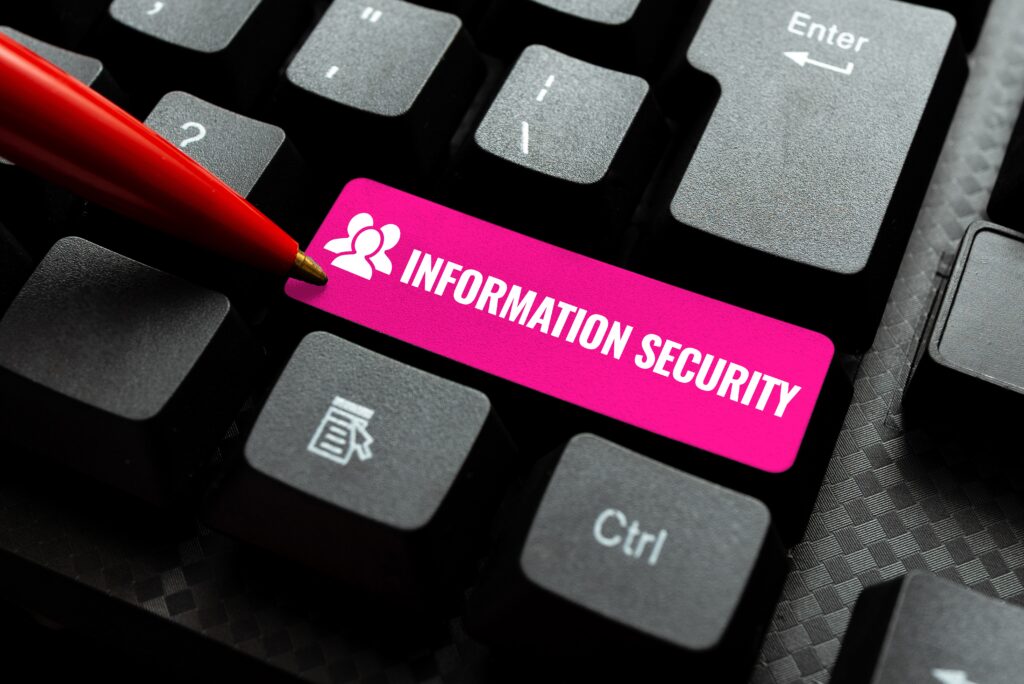Why is Cybersecurity Metrics Important?
Cyber security metrics are a valuable tool for organizations to measure and analyze their security posture. Cybersecurity metrics provide insight into the effectiveness of security measures and can help identify areas of improvement to ensure the organization is adequately protected from cyber threats. With cybersecurity threats increasing in both number and complexity, it is more important than ever to have reliable, actionable indicators of organizational security health.
Measuring the right cybersecurity metrics can also provide invaluable information to upper management when making decisions on budget allocations, policy updates and investments related to cyber defense strategies. By providing an accurate picture of the current state of a company’s cybersecurity, executives can make informed decisions that will keep their business safe from attack or data loss.
The top 10 cybersecurity metrics and KPIs to track in 2023:
- Intrusion attempts vs. actual security incidents
- Mean time to detect (MTTD)
- Mean time to respond (MTTR)
- Mean time to contain (MTTC)
- Unidentified devices on the network
- Patching cadence and effectiveness.
- Security audit compliance
- Number of systems with known vulnerabilities
- Number of users with “super user” access level.
- Phishing training effectiveness
Why is it important for organizations to track KPI’s
Organizations often struggle to maintain strong security postures and protect their data from security threats.
Without setting key performance indicators (KPIs), it can be difficult for organizations to identify potential threats, measure employee engagement with security protocols, or respond quickly when necessary. This leaves businesses vulnerable to cyberattacks and data breaches which can lead to costly losses in terms of both time and money.
Setting KPIs is essential for maintaining strong security postures across organizations as it allows them to better understand their risk profile while improving their ability to respond quickly when necessary. By monitoring metrics such as the number of users with “super user” access or phishing training effectiveness regularly, businesses can benefit from improved visibility into potential threats as well as increased awareness regarding their overall security posture which ultimately leads to fewer losses due malicious intrusions or data breaches.
Additionally, regular evaluation of employee engagement with security protocols ensures that all staff members are aware of the latest fraud and cybercrime trends, further reducing the chances of a successful attack on corporate systems or databases.
By having a well thought out program to track these metrics, it helps security teams and CISOs (Chief Information Security Officers) explain to higher management, the executive team and even non technical stakeholders why additional resources and funding are most likely needed, and can help show previous progress.

Intrusion attempts vs. actual security incidents
is an important cybersecurity metric and KPI to track in 2023 as it helps organizations gain insight into the effectiveness of their security measures. Knowing how often a system has been targeted by malicious actors and being able to compare this with the number of successful intrusions provides valuable insights that can help inform decisions around budget allocations, policy updates and investments related to cyber defense strategies.
Intrusion attempts are defined as any attempts made by attackers to compromise a system, while actual cybersecurity incidents involve users or external parties successfully circumventing access controls or gaining unauthorized access to data. Monitoring intrusion attempts and distinguishing them from actual security incidents allows organizations to better understand their risk profile, prioritize threats, and determine where additional measures may be necessary for protecting their information assets.
By tracking intrusion attempts and categorizing them based on the source of attack (e.g., internal user accounts, external IP addresses), organizations can gain an understanding of who is targeting their systems and where they are coming from. This can be especially useful in identifying persistent attackers who may have been behind multiple attempts prior to eventually breaching the organization’s defenses.
Additionally, knowing how many times an attacker tried to enter before succeeding provides further insights into the strengths and weaknesses of current security measures. Tracking intrusion attempts vs actual security incidents also allows organizations to measure the efficacy of any incident response efforts taken following a successful breach or attack.
For example, tracking changes in intrusion attempt frequency before and after incident response efforts can provide a measure of success if post-incident activity is reduced significantly following incident response activities. These cybersecurity KPIs can then be used as justification for increased investment in cybersecurity operations or technologies that might have helped mitigate these attacks earlier on in order prevent future incidents from occurring.
Mean Time to Detect (MTTD)
MTTD is an important cybersecurity metric and KPI to track in 2023 as it provides organizations with a measure of how quickly they can detect and respond to threats. MTTD measures the elapsed time between when an intrusion or attack first occurs and when it is discovered by the organization’s security team. It is important for organizations to pay close attention to this metric as the quicker they are able to detect a threat, the less likely it is that significant data or resources will be lost.
One way organizations can reduce their MTTD is by investing in proactive security solutions such as Intrusion Detection Systems (IDS), which actively monitor network traffic for suspicious activity. By having these systems in place, organizations can detect malicious activities much more quickly than if they had relied solely on manual checks. In addition, organizations should also consider deploying Artificial Intelligence (AI) powered security solutions that use machine learning algorithms to continually analyze network traffic and identify anomalies that could indicate malicious intent. AI-based security solutions are especially beneficial as they are able to learn over time and become even more effective at identifying potentially malicious activities.
Organizations should also focus on implementing processes for increased visibility into their networks, allowing them to spot potential intrusions sooner. Logging of user-activity allows for faster detection of attempts at accessing confidential information or vulnerable systems, while regular scans of local networks provide actionable intelligence about potential threats or vulnerabilities that may have gone unnoticed otherwise. Additionally, many companies are now using deception technology which uses decoy networks or files that alert IT teams when attackers attempt to access them, thus enabling them to take swift action before real damage occurs.
Finally, having a mature incident response plan in place helps reduce Mean Time To Detect as well by providing steps and procedures for teams responding to a breach quickly and efficiently. This includes tasks such as isolating affected machines from the network, revoking user credentials associated with the breach and conducting investigations into the source of the attack so appropriate countermeasures can be taken in future instances. All these steps can help ensure teams are able to identify intrusions faster leading to reduced losses overall.

Mean Time To Respond (MTTR)
MTTR measures the elapsed time between when an intrusion or attack is first detected and when it is fully contained. This metric is important for organizations to pay close attention to, as the quicker they can contain a threat, the less likely they are to suffer significant data or resource losses. Organizations should consider investing in proactive security solutions such as Intrusion Detection Systems (IDS), Artificial Intelligence (AI) powered security solutions, increased visibility into their networks, and deception technology that alerts IT teams of suspicious activity. Additionally, having a mature incident response plan in place helps ensure teams are able to respond quickly and efficiently by providing steps and procedures for containment of threats. Implementing these solutions can help reduce MTTR significantly leading to fewer losses overall.

Mean time to contain (MTTC)
MTTC measures the elapsed time between when an intrusion or attack has been detected and when it has been fully contained. This metric is a crucial factor for organizations to pay attention to, as the quicker they can contain a threat, the less likely they are to suffer from significant data or resource losses. Organizations should consider investing in proactive security solutions such as Endpoint Detection and Response (EDR), Artificial Intelligence (AI) powered security solutions, increased visibility into their networks, and deception technology that alerts IT teams of suspicious activity.
These solutions can help reduce MTTC significantly leading to fewer losses overall. For example, an EDR solution can detect malware or malicious behavior and alert the SOC (Security Operations Center) who can then isolate the machine in a matter of seconds if needed. AI-based security solutions can continuously analyze network traffic for anomalies that may indicate malicious intent, while increased visibility into networks allows organizations to spot potential intrusions sooner by logging user-activity. Additionally, deploying deception technologies with decoy networks or files can alert IT teams when attackers attempt to access them enabling them to take swift action before real damage occurs.
Having a mature security incident response plan in place also helps reduce MTTC by providing guidance on steps and procedures necessary for effective containment of threats. This includes tasks such as isolating affected machines from the network, revoking user credentials associated with the breach and conducting investigations into the source of the attack so appropriate countermeasures can be taken in future instances. By following these guidelines during an incident response process teams will likely be able to contain a threat much faster leading to fewer losses overall.

Unidentified devices on the network
Tracking these and its numbers is an important security metric because it can give organizations valuable insight into any malicious activity that has infiltrated their systems. Knowing when and where unknown devices are connected to a network allows IT teams to take swift action to identify and shut down potential attacks before real damage occurs. Unidentified devices can be detected by monitoring network traffic for anomalies, implementing Intrusion Detection Systems (IDS), or deploying AI-based security solutions that continuously analyze data for suspicious activity. Organizations should also consider investing in increased visibility into networks, which allows them to log user activities, detect unauthorized access attempts and track activity from unknown or unidentified devices.
Deception technologies such as decoy networks or files can also help organizations detect unidentified devices on their networks. By setting up deceptive “honeypots” with fake resources or information, organizations are able to detect attackers attempting to access these decoys and alert IT teams quickly so they can take immediate action. Additionally, having a mature incident response plan in place helps ensure teams are able to respond quickly and efficiently by providing steps and procedures for containment of threats if an attacker is successful in infiltrating a system.
It’s important for organizations to pay close attention to unidentified devices on their networks in order to keep their data secure and reduce losses from malicious intrusions. Being aware of unknown or unexpected forms of communication entering the environment enables IT teams to identify potential threats faster leading to reduced Mean Time To Respond (MTTR) and Mean Time To Contain (MTTC). Investing in proactive security solutions such as IDS, AI-powered security solutions, increased visibility into networks, deception technologies, as well as a mature incident response plan will help ensure teams are able contain intrusions faster leading overall improved safety and lower risk of losses due to malicious attacks.
Patching cadence and effectiveness
How quickly and how well you are patching systems is an important security metric because it allows organizations to quickly address any vulnerabilities or weaknesses in their systems. This practice of proactive patching helps minimize the risk of attackers exploiting known security issues and reduce system downtime, which can lead to significant losses if not addressed promptly. Additionally, patching helps protect against zero-day attacks that target previously unknown vulnerabilities, providing IT teams with increased visibility into network traffic for suspicious activity.
By regularly assessing the effectiveness of patches and applying them in a timely manner, organizations are able to maintain a high degree of security across their networks. This can be done through vulnerability scanning tools that check for missing updates or outdated software on machines as well as by implementing automation solutions for patch management so patches can be quickly deployed across all devices. Additionally, IT teams should look into options such as cloud-based patching services and automated testing environments which can help speed up the process while reducing costs associated with manual patching efforts.
Organizations should also consider investing in staff training that focuses on cyber hygiene practices such as secure coding protocols and secure configuration management so employees are aware of their critical role in maintaining the security of company infrastructure. By creating a culture of proactivity when it comes to patching, teams can ensure the most up-to-date security measures are being implemented across all systems leading to improved protection against known threats and zero-day attacks, thus helping reduce potential losses from malicious intrusions.
Security audit compliance
Tracking the results of a security audit is a great idea as it ensures organizations are meeting the necessary security standards, regulations, and controls. By regularly conducting audits, companies are able to identify any weaknesses or gaps in their security infrastructure and take the appropriate steps to address them. This helps ensure that all systems remain compliant with industry requirements, government regulations, and other legal mandates. Additionally, it ensures that businesses stay within current best practices in order to protect themselves from potential malicious activity.
Audits provide organizations with a snapshot of their overall security posture and can help detect any vulnerabilities or misconfigurations before they become exploited by attackers. Moreover, having a comprehensive understanding of their environment also allows teams to better plan for future threats and invest in solutions that would be most effective against them. Regular audits provide a baseline for measuring the effectiveness of different security measures so teams can respond quickly when necessary.

Additionally, regular audits also help promote transparency which is something customers have come to expect from companies that handle their data. Having an auditable system allows businesses to demonstrate their commitment to protecting customer data and enables them to build trust with customers who are more likely to opt for services offered by trusted companies. This level of transparency also helps establish credibility with external stakeholders such as regulators and investors who may want assurance that customer data is being stored securely before working with a company or investing in its stock.
Overall, audit compliance plays an important role in maintaining strong security postures across organizations as it helps ensure all systems remain up-to-date with the latest requirements and best practices while providing visibility into potential risks or weaknesses in existing infrastructure so they can be addressed promptly. Investing in staff training programs on cyber hygiene practices is essential for ensuring ongoing compliance while helping protect against malicious intrusions leading to improved safety and lower risk of losses due to malicious attacks.
Number of systems with known vulnerabilities
Tracking the number of systems with known vulnerabilities in your corporate network is an important metric to monitor because it indicates the level of risk associated with a particular environment. Knowing how many systems are affected can help IT teams prioritize patches and better allocate resources when addressing potential threats. Additionally, tracking this metric can provide insight into whether current security measures are effective and if more needs to be done to mitigate risks.
Having this information readily available improves overall situational awareness, allowing businesses to take swift action when necessary in order to avoid data breaches or other malicious activity. For example, if a system was found to have a critical vulnerability that could lead to unauthorized access or privilege escalation, then immediate steps should be taken to patch the system before any damage occurs. By tracking the number of systems with known vulnerabilities, especially critical vulnerabilities, teams can quickly identify and address any potential issues before they become exploited by attackers.
Furthermore, understanding which systems may have vulnerabilities also helps organizations plan ahead for future threats. If a certain type of vulnerability is commonly exploited, then IT teams can start preparing patches in advance so they are ready for deployment as soon as new versions become available. This proactive approach helps ensure that vulnerable systems are secured without costly delays due to manual patching efforts.
Overall, tracking the number of systems with known vulnerabilities is essential for maintaining strong security postures across organizations as it allows them to better understand their risk profile while improving their ability to respond quickly when necessary. By monitoring this metric regularly, businesses can benefit from improved visibility into potential threats as well as increased security awareness regarding their overall security posture which ultimately leads to fewer losses due malicious intrusions or data breaches.
Number of users with “super user” access level
Keeping a close eye on this metric is extremely relevant as it helps organizations understand who has the highest levels of access to their system and can identify potential security threats. Knowing which users have administrative privileges can help IT teams better manage user permissions and limit access to sensitive data or systems, reducing the risk of unauthorized activity or malicious attacks. Additionally, tracking this metric allows businesses to quickly identify any unauthorized user accounts that may have been created for malicious purposes which can help them address the issue before any damage occurs.
Furthermore, understanding who has “super user” access also helps IT teams respond more quickly in case of a breach as they will be able to pinpoint the source and take steps to secure the compromised account. This improved visibility into privileged accounts also assists in investigations regarding suspicious activity such as file tampering or unexpected changes in system configurations. By monitoring this metric regularly, businesses can benefit from increased cybersecurity awareness training into who has access to elevated privileges while ensuring that only authorized personnel are granted those levels of access.
Overall, tracking the number of users with “super user” access is key for maintaining strong security postures across organizations as it helps prevent unauthorized activities from occurring while allowing teams to respond quickly if any malicious behavior is detected. By monitoring this metric regularly, businesses can benefit from improved visibility into potential threats as well as increased awareness regarding their overall security posture which ultimately leads to fewer losses due malicious intrusions or data breaches.
Phishing training effectiveness
Measuring the results of phishing training exercises and cybersecurity awareness training in general is great because it helps businesses identify potential threats and reduce the risk of a data breach or malicious attack. By monitoring this metric regularly, teams can quickly assess how well employees understand and recognize phishing emails, enabling them to intervene before any damage occurs. This increased awareness about potential threats helps organizations protect their data by providing employees with the tools and knowledge to prevent successful phishing attempts.
Furthermore, tracking phishing training effectiveness also helps organizations evaluate employee engagement with security protocols. Regularly assessing how well employees understand and respond to phishing emails allows IT teams to identify any areas where additional education or awareness campaigns might be needed. This ensures that all staff members are properly trained on the latest security measures which can help reduce the risk of a successful cyberattack. Additionally, measuring employee response time when faced with suspicious emails helps identify those who may need specialized guidance or additional support in order to better protect themselves online.

Overall, understanding phishing training effectiveness is essential for maintaining strong security postures across organizations as it allows them to better understand their risk profile while improving their ability to respond quickly when necessary. By monitoring this metric regularly and measuring cybersecurity awareness training results, businesses can benefit from improved visibility into potential threats as well as increased awareness regarding their overall security posture which ultimately leads to fewer losses due malicious intrusions or data breaches. Additionally, regular evaluation of employee engagement with security protocols ensures that all staff members are aware of the latest fraud and cybercrime trends, further reducing the chances of a successful attack on corporate systems or databases.
What are the steps to achieve a comprehensive security metrics program?
Achieving a comprehensive cybersecurity metrics program requires careful planning and consideration. First, organizations must assess their security needs and goals in order to determine the most effective metrics that will help them meet those objectives. This could include examining their current security posture and risk profile as well as identifying any areas of vulnerability or improvement. After deciding on specific metrics and KPIs, organizations should then create a system for tracking and monitoring these cybersecurity KPIs over time.
This involves creating processes for collecting data related to each metric, establishing thresholds at which certain actions need to be taken, and regularly evaluating the performance of these cybersecurity KPIs. Next, organizations should focus on developing strategies for responding to potential threats identified by their metrics. This could include training employees on the latest security protocols, implementing new technology solutions such as multi-factor authentication or encryption, or conducting regular phishing simulations.

By understanding how their chosen metrics respond to changes in security posture, organizations can gain insight into which strategies are most effective for mitigating risk and protecting their data from malicious actors. Finally, organizations should strive to ensure that all staff members are up-to-date on the latest cybersecurity trends and technologies so they can recognize potential threats quickly and take appropriate action when necessary.
This could involve providing additional education or awareness campaigns related to phishing prevention or investing in specialized attack simulations that test employee response times when faced with suspicious emails or other malicious activity. Additionally, regularly assessing employee engagement with security protocols allows IT teams to identify any areas where additional education or guidance may be needed in order to better protect themselves online.
Ultimately, creating a comprehensive cybersecurity metrics program is essential for maintaining strong security postures across organizations as it allows them to better understand their risk profile while improving their ability to respond quickly when necessary.
By setting key performance indicators (KPIs), tracking metrics regularly, developing strategies for responding appropriately to threats identified by these measurements, and continually educating staff members about the latest fraud and cybercrime trends businesses can benefit from improved visibility into potential threats as well as increased awareness regarding their overall security posture which ultimately leads to fewer losses due malicious intrusions or data breaches






